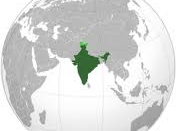Top stories from DAWNS Digest.
Another Massive Blackout in India
To put this in perspective, this is more than the population of the European Union and Turkey, combined. “India’s energy crisis cascaded over half the country Tuesday when three of its regional grids collapsed, leaving 620 million people without government-supplied electricity in one of the world’s biggest-ever blackouts. Hundreds of trains stalled across the country and traffic lights went out, causing widespread traffic jams in New Delhi. Electric crematoria stopped operating, some with bodies half burnt, power officials said. Emergency workers rushed generators to coal mines to rescue miners trapped underground. The massive failure — a day after a similar, but smaller power failure — has raised serious concerns about India’s outdated infrastructure and the government’s inability to meet its huge appetite for energy as the country aspires to become a regional economic superpower.” (USA Today http://usat.ly/Mwczeh)
World Bank Stepping in to Avert Food Price Spike
Remember the spike in food prices in 2008 that sparked riots in several developing world countries? The World Bank is trying to avert a repeat scenario. “The World Bank on Monday said it stood ready to help governments respond to a broad-based run-up in grain prices that has again put the world’s poorest people at risk and could have lingering detrimental impacts for years. ‘We cannot allow short-term food-price spikes to have damaging long-term consequences for the world’s most poor and vulnerable,’ World Bank Group President Jim Yong Kim said in statement…A severe drought in the U.S. Midwest has cut projected grain yields dramatically…Wheat prices have jumped more than 50 percent and corn prices more than 45 percent since mid-June, with dry conditions in Russia, Ukraine and Kazakhstan, excessively wet weather in Europe and a below average start to the Indian monsoon season adding to global crop worries. Prices for soybeans, a critical food and animal feed crop, also have risen almost 30 percent over the past two months and nearly 60 percent since the end of last year. (Reuters http://bit.ly/N7BVhY)
Fighting Rages on in Aleppo
There is not too much new news from the battle of Aleppo, but it still deserves a top mention in the digest for its potential to become a humanitarian catastrophe. “The battle for Aleppo has become a crucial test for both sides in the 16-month-old rebellion. Neither Assad’s forces nor the rag-tag rebels can afford to lose if they hope to prevail in the wider struggle for Syria. The fighting has proved costly for the 2.5 million residents of Aleppo, a commercial hub that was slow to join the anti-Assad revolt that has rocked other cities, including the capital, Damascus. While rebels say they will turn Aleppo into the “grave” of the Assad government, thousands of residents have fled the city and those who remain face shortages of food and fuel and the ever-present risk of injury or death. ‘We have hardly any power or water, our wives and kids have left us here to watch the house and have gone somewhere safer.’ said Jumaa, a 45-year-old construction worker, who complained it was nearly impossible to observe the Muslim fasting month of Ramadan, now in progress. (Reuters http://reut.rs/Mwe2By)
